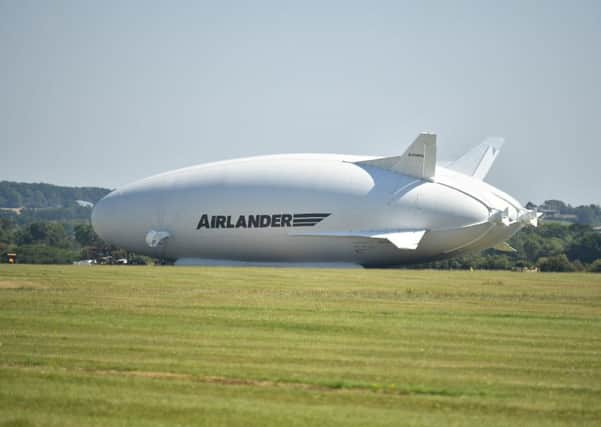World's largest aircraft Airlander 10 crashes on test flight


Airlander 10, a 302ft-long (92-metre) part plane, part helicopter and part airship, was damaged at its base at Cardington Airfield, Bedfordshire, on Wednesday morning.
Photographs emerged showing the aircraft on the ground with its nose pointing towards the floor.
Advertisement
Hide AdAdvertisement
Hide AdA spokesman for Hybrid Air Vehicles (HAV), which is developing Airlander 10, said: “Airlander sustained damage on landing during today’s flight.”
He added: “We’re debriefing following the second test flight this morning. All crew are safe and well, and there are no injuries.”
First developed for the US government as a long-endurance surveillance aircraft, the British firm launched a campaign to return the craft to the sky after it fell foul of defence cutbacks.
It is about 50ft (15 metres) longer than the biggest passenger jets and uses helium to become airborne, travelling at speeds of up to 92mph.
Advertisement
Hide AdAdvertisement
Hide AdThe Airlander successfully completed its first test flight without incident on August 17. It performed one lap of the airfield before landing about half an hour later.
That was set to be the beginning of 200 hours of test flights for the 143ft-wide (44-metre) and 85ft-high (26-metre) craft, which will be able to stay airborne for about five days during manned flights.
HAV claims it could be used for a variety of functions such as surveillance, communications, delivering aid and even passenger travel.
It is also hoped an Airlander 50 will eventually be developed, which would be able to transport 50 tonnes of freight.